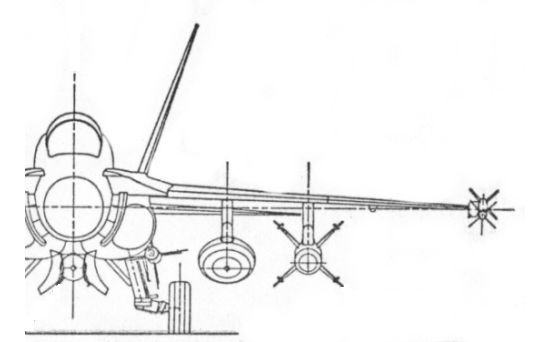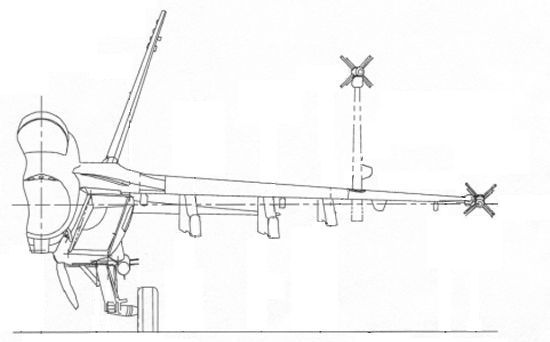|
||||||||||
|
|
||||||||||
|
||||||||||
|
|
||||||||||

This geometry is used for one significant reason. At all times, the wingtip will see a lower angle of attack than the rest of the wing. As the angle of attack of the wing increases, it will eventually reach a point where the air flow separates from it and the wing losses lift, a phenomenon called wing stall. So the advantage of reducing the angle of attack at the wingtip is that it cannot stall before the rest of the wing does. This behavior is advantageous because the aileron control surfaces, those surfaces that control an aircraft's ability to roll, are located at the tip. Therefore, though the rest of the wing has stalled, air still flows over the ailerons allowing the pilot to maintain control authority using these vital surfaces. This control authority aids the pilot in regaining control of the aircraft during a wing stall so that he can resume flying at a safer, more stable attitude.
As for the difference in twist between the earlier F-18 Hornet and newer F-18E/F Super Hornet, you are correct in pointing out that the newer model does indeed have less twist than the original. The twist on the original Hornet is slightly more than 4°, but you are mistaken in stating that the E/F has none. In actuality, the wing twist on the E/F model is about 1.5°. Front views of these two aircraft are provided below, and these images are approximately the same scale. By comparing the positions of Sidewinder missiles mounted at the wingtips, you can immediately see the greater twist on the earlier model.


Why the difference between the two generations of the Hornet? Well, despite your comment about the similarities between the two models, they are actually quite a bit more different than they might appear to be at first glance. The E/F makes use of a totally redesigned wing that is larger, thicker, and of greater span than the original. Other noteworthy modifications include larger leading edge root extensions (LERXs) and the addition of a dogtooth notch in the leading edge.
In terms of the twist, however, the most significant difference between the two planes is that the wing on the
Super Hornet is designed to be much stiffer than that on the Hornet. The original wing is very flexible and
exhibits quite a bit of deformation under high g-loads or even when ejection charges fire to release an underwing
store. The wingtips were given a fairly large amount of downward twist so that the outer wing would still remain
at a lower angle of attack than the inner wing even under these high-deflection conditions. Since the wing on the
Super Hornet is more rigid and does not experience these high deformations, it does not require nearly as much wing
twist as on the earlier models.
- answer by Jeff Scott, 20 October 2002
Related Topics:
What is the U.S. Navy's unofficial name for the F-18E/F Super Hornet? And why is it used?
Why are the stabilizers on planes like the F-18 and F-22 slanted?
Read More Articles:


|
Aircraft | Design | Ask Us | Shop | Search |

|
|
| About Us | Contact Us | Copyright © 1997-2023 | |||
|
|
|||